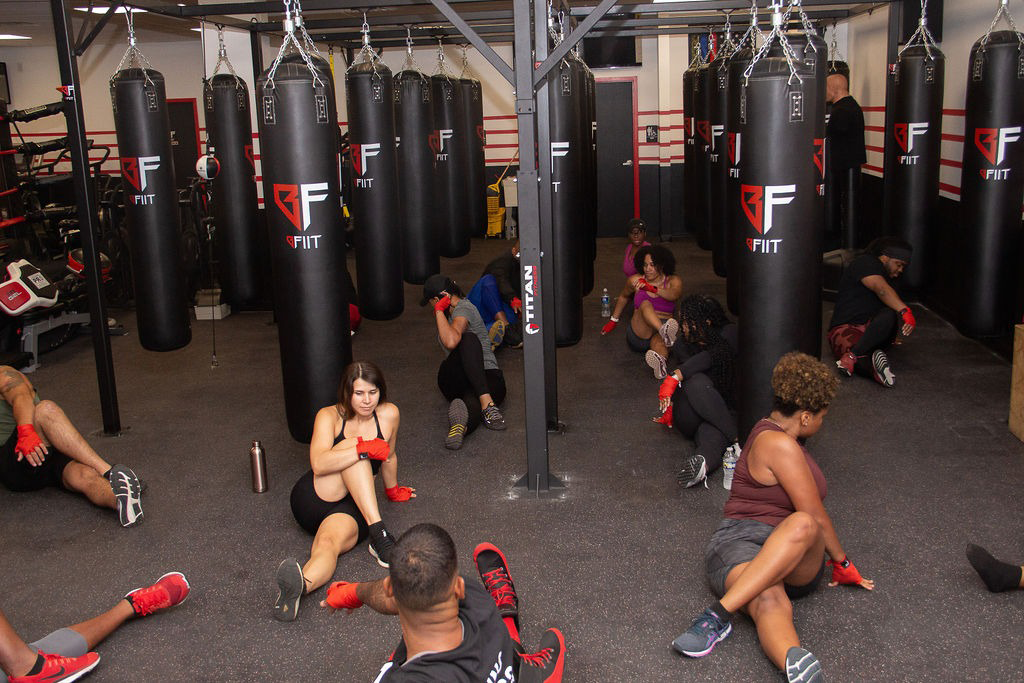What is a HIIT Workout?
HIIT workouts are efficient, effective, and incredibly versatile, making them a favorite among athletes, beginners, and anyone short on time. If you’re new to HIIT, BFIIT is here to break down what it is, how it helps burn fat, what you can expect in a typical session, and how often you should train to get the best results.
What is HIIT?
HIIT stands for high-intensity interval training. It’s a training style that alternates between short bursts of intense activity and brief periods of rest or low-intensity movement.
With HIIT, you go all-out during the work phase, which could be anything from punches and sprints to jump squats and battle ropes. For this reason, most HIIT sessions last anywhere from 20 to 45 minutes (but they burn calories like a much longer workout). In essence, it’s about training smarter, not longer. It’s important to note that HIIT can be adapted for any fitness level.
Does HIIT Burn More Fat Than Other Workouts?
HIIT can be one of the most effective fat-burning workouts and outperforms other exercises due to intensity and “afterburn.” Aside from running 10+ mph for a half hour straight, HIIT can burn more calories than almost any other workout.
But the truth is, HIIT isn’t a magical calorie incinerator. The amount of calories you burn depends on several key factors, including, but not limited to:
Intensity of Effort
HIIT only works if the high-intensity part is genuinely high. Going at 80-90% of your max heart rate during intervals leads to a significantly higher calorie output than if you're just coasting. For example, a full-out 30-second sprint burns far more calories than a steady jog of the same length.
2. Duration of the Session
By design, HIIT is shorter than most steady-state cardio workouts but more intense. Therefore, a 20-minute HIIT workout may burn roughly the same total calories as a 45-minute jog.
3. Body Composition & Weight
A 200 lb person will burn more calories than a 130 lb person doing the same workout because moving a heavier body requires more energy.
4. Type of Movements
Full-body, compound moves (like jump squats, burpees, or boxing combos) burn more calories than isolated movements (like crunches). Adding resistance and weight through dumbbells and slam balls also raises energy demand.
5. Fitness Level
Beginners may burn more at first due to inefficiencies (their bodies work harder to adapt). That said, advanced athletes can often push harder and sustain higher output over time.
What Are Common Exercises in a HIIT Workout?
You can integrate a wide variety of exercises into HIIT. If you’re attending a HIIT class, the exercise selection will largely depend on the instructor and the type of gym. That said, some of the most common HIIT exercises include:
Boxing-Based HIIT Exercises
Heavy bag combos (jab-cross-hook-slip combos)
Shadowboxing with speed rounds
Speed bag intervals
Focus mitt drills (partner work)
Defensive movement drills (slips, rolls, footwork)
Bodyweight Power Moves
Jump squats
Mountain climbers
Push-ups (standard, wide, or plyometric)
High knees or tuck jumps
Plank jacks or shoulder taps
Strength & Core Intervals
Dumbbell thrusters
Kettlebell swings
Russian twists
Bicycle crunches
Deadlifts to press (for more advanced levels)
Explosive Plyometrics
Box jumps
Knee-to-Free Jump
Med Ball Throws
Broad jumps
Burpees
Conditioning Finishers
Sled pushes
Battle ropes
Agility ladder drills
Jump rope sprints
Hand Elevated Mountain Climbers
How Many HIIT Workouts Should People Do A Week?
For most people, two to four HIIT workouts per week is the sweet spot. That’s enough to see fat loss, improved cardio, and muscular endurance without overloading the body or risking injury. However, people who have been exercising consistently for six-twelve months can likely benefit from up to three to four workouts per week.
Some people can do HIIT daily. But like most workouts, this kind of frequency can lead to:
Burnout or plateau
Elevated cortisol (stress hormone)
Poor sleep or recovery
Increased injury risk
Ultimately, you need to listen to your body and let it rest. Two to four well-executed sessions a week will keep you strong, fast, and progressing.
What Is The “Afterburn Effect” of HIIT?
When people talk about the “afterburn effect” of HIIT, they’re referring to excess post-exercise oxygen consumption (EPOC). EPOC is the increased use of oxygen and calories after you stop exercising, allowing your body to return to a resting state.
According to the Journal of Sports Sciences, the EPOC effect produces a six to fifteen percent increase in overall calorie consumption. Therefore, if you burn 500 calories during a workout, you could burn an additional 75 calories after your workout due to EPOC. At first glance, it may seem insignificant, but over weeks, months, and years, that translates to losing pounds and gaining muscle definition.
HIIT at BFIIT
HIIT isn’t just about burning calories—it’s about building endurance, sharpening skill, and leveling up your fitness with intention. At BFIIT, our high-intensity workouts blend boxing technique with athletic conditioning to give you lasting results. If you’re in the Pittsburgh area, explore our class schedule and take the first swing toward a stronger you.






